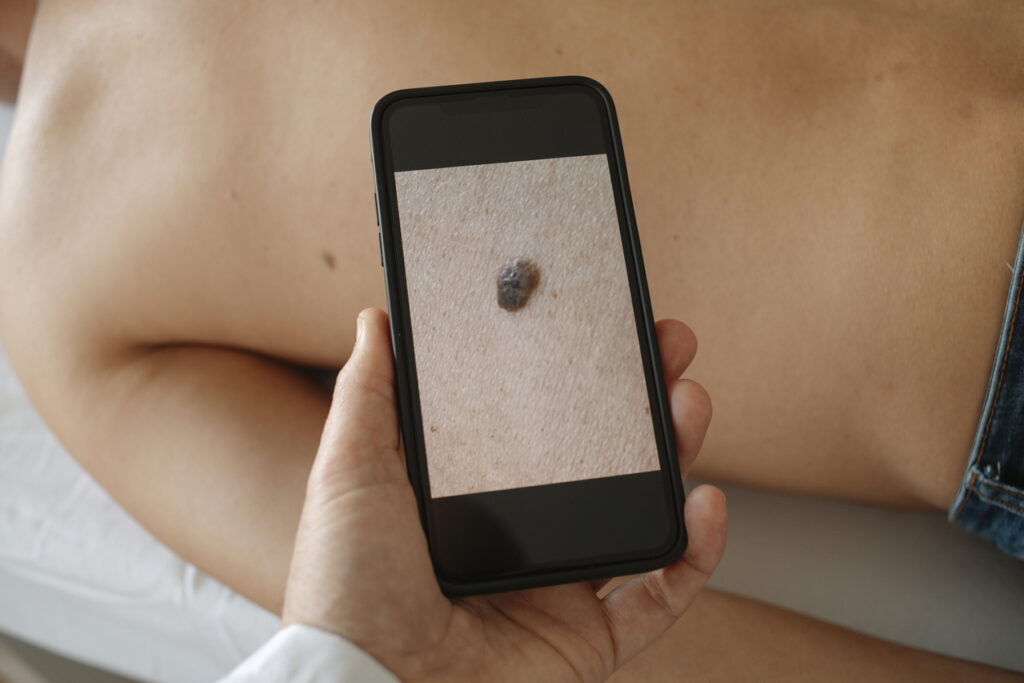PanDerm, a new artificial intelligence (AI) powered tool, can analyze multiple imaging types simultaneously, improving detection of melanoma and other skin diseases, a new study suggests.
Featured in Nature Medicine, PanDerm assists with real-world dermatological medical practice by analysing multiple types of images, including close-up photos, dermoscopic images, pathology slides, and total body photographs.
Improves Diagnosis Accuracy
PanDerm improved skin cancer diagnosis accuracy by 11% when used by doctors, and the model helped non-dermatologist healthcare professionals improve diagnostic accuracy on various other skin conditions by 16.5%, the research showed.
It also showed the ability to detect skin cancer early, identifying concerning lesions before clinician detection.
Trained on more than two million skin images, data for the model was sourced from 11 institutions in multiple countries, across four types of medical images.
Associate Professor Zongyuan Ge from Monash University’s Faculty of Information Technology in Australia points out that existing AI models for dermatology remain limited to isolated tasks, such as diagnosing skin cancer from dermoscopic images; magnified images of skin captured using a dermoscope tool.
“Previous AI models have struggled to integrate and process various data types and imaging methods, reducing their usefulness to doctors in different real-world settings,” Ge says.
“PanDerm is a tool designed to work alongside clinicians, helping them interpret complex imaging data and make informed decisions with more confidence.”
Functions as a Support Tool
Unlike existing models, which are trained to perform a single task, PanDerm was evaluated on a wide range of clinical tasks such as skin cancer screening, predicting the chance of cancer returning or spreading, skin type assessment, mole counting, tracking lesion changes, diagnosing a wide range of skin conditions, and segmenting lesions.
In clinical settings, PanDerm functions as a support tool that analyses the spectrum of skin images that doctors routinely use. The system processes these images and provides diagnostic probability assessments, helping clinicians interpret visual data with greater confidence.
This integration is particularly valuable for improving diagnostic accuracy among non-specialists, detecting subtle lesion changes over time, and assessing patient risk levels.
First author and PhD student Siyuan Yan from Monash University Faculty of Engineering says that the multimodal approach was key to the system’s success.
“By training PanDerm on diverse data from different imaging techniques, we’ve created a system that can understand skin conditions the way dermatologists do; by synthesising information from various visual sources,” Yan says.
“This allows for more holistic analysis of skin diseases than previous single-modality AI systems.”
Detects Subtle Changes Over Time
Lead co-author of the paper Alfred Health Victorian Melanoma Service Director Professor Victoria Mar, adds that PanDerm shows promise in helping detect subtle changes in lesions over time and provide clues to lesion biology and future risk of spread.
“This kind of assistance could support earlier diagnosis and more consistent monitoring for patients at risk of melanoma,” Mar says.
“In hospitals or clinic settings, doctors use diverse ways and different types of images to diagnose skin cancer or other skin conditions.”
University of Queensland Dermatology Research Centre Director and one of the lead co-authors of the research, Professor H. Peter Soyer, said differences in imaging and diagnosis techniques could also arise due to different levels of resources available in urban, regional, and rural healthcare spaces.
“The strength of PanDerm lies in its ability to support existing clinical workflows,” Soyer says.
“It could be particularly valuable in busy or resource-limited settings, or in primary care where access to dermatologists may be limited.
“We have seen that the tool was also able to perform strongly even when trained on only a small amount of labelled data, a key advantage in diverse medical settings where standard annotated data is often limited.”
Senior co-author Professor Harald Kittler from Medical University of Vienna Department of Dermatology says that PanDerm demonstrated how global collaboration and diverse clinical data can be used to build AI tools that are not only technically strong but also clinically relevant across different healthcare systems.
“Its ability to support diagnosis in varied real-world settings, including in Europe, is a step forward in making dermatological expertise more accessible and consistent worldwide,” Kittler says.
Currently in Evaluation Phase
Though showing promising research results, PanDerm is currently in the evaluation phase before broader healthcare implementation.
Looking to the future, the researchers aim to develop more comprehensive evaluation frameworks that address a wider range of dermatological conditions and clinical variants.
The team plans to establish standardized protocols for cross-demographic assessments and further investigate the model’s performance in varied real-world clinical settings, with a particular focus on ensuring equitable performance across different patient populations and healthcare environments.


